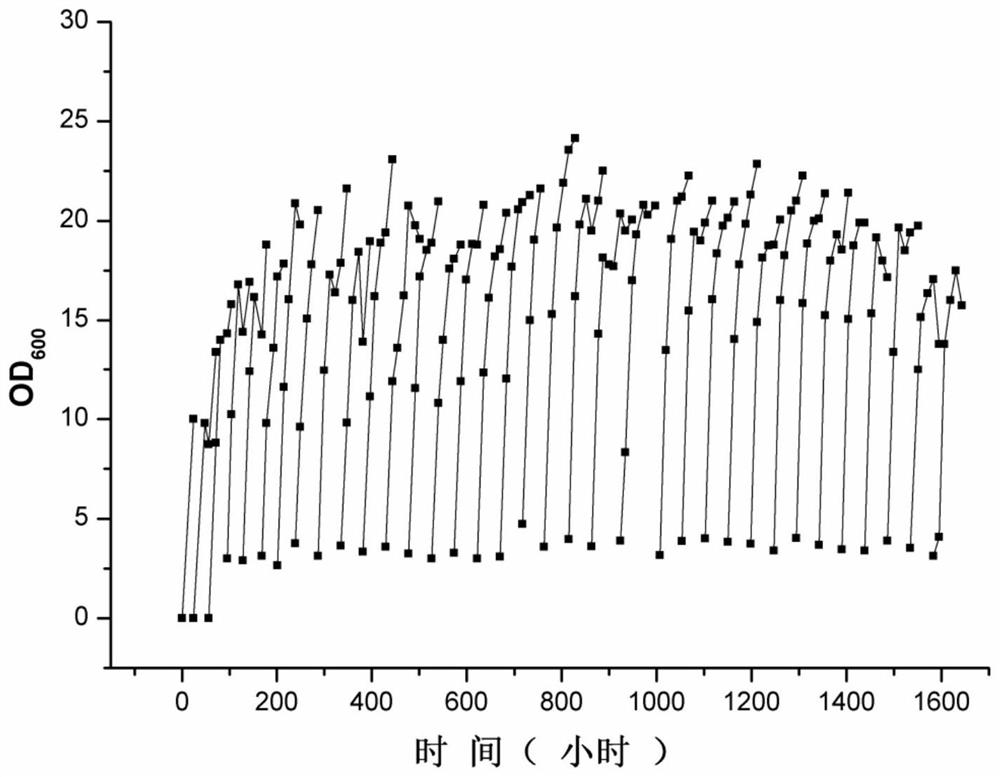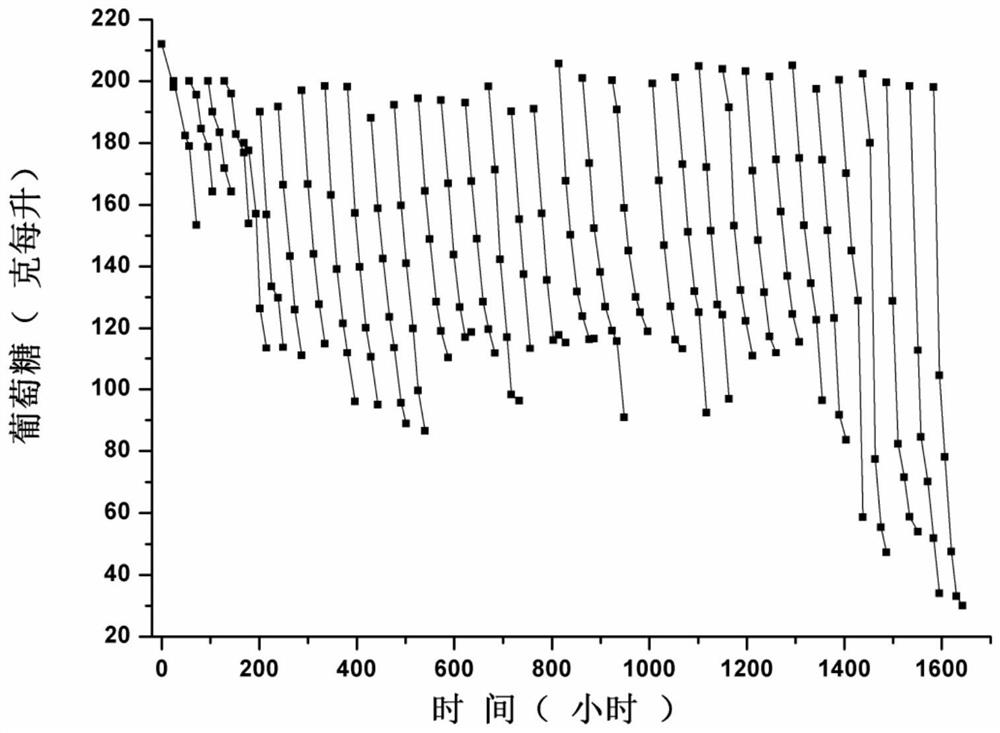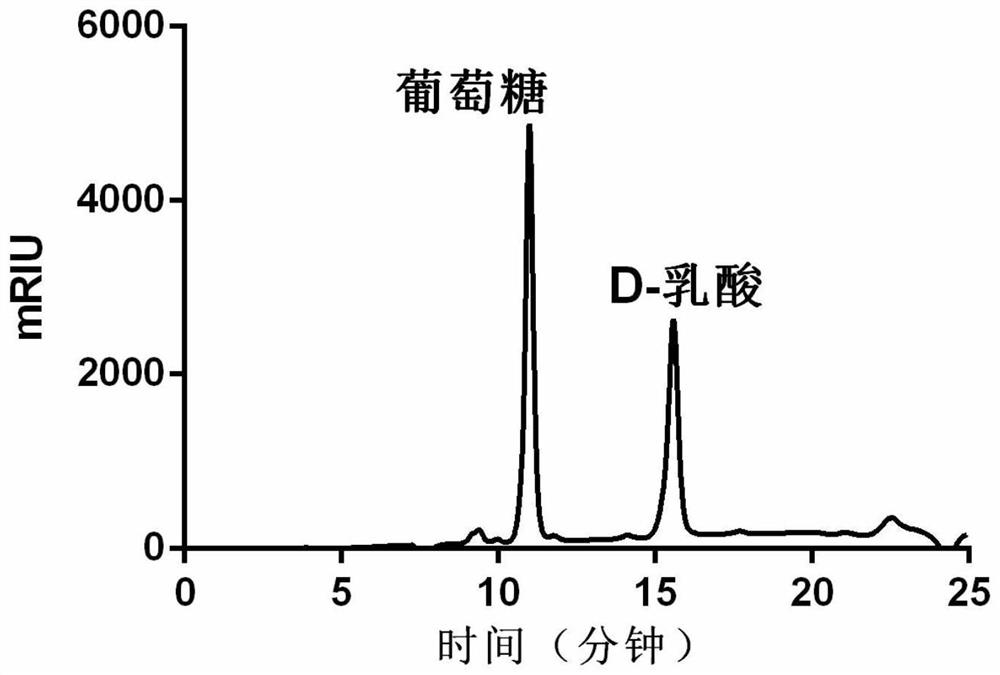High-glucose-resistant lactic acid production strain and application thereof in D-lactic acid production
A technology of lactic acid and lactate dehydrogenase, applied in the field of microorganisms, can solve problems such as increasing production costs
- Summary
- Abstract
- Description
- Claims
- Application Information
AI Technical Summary
Problems solved by technology
Method used
Image
Examples
Embodiment 1
[0053] Embodiment 1, the acquisition of Bacillus coagulans (Bacillus coagulans) G35 and G35-LjLDH and identification of fermentation characteristics
[0054] In this example, Bacillus coagulans (Bacillus coagulans) D-DSM1 was used as the starting strain, and the atmospheric pressure room temperature plasma (ARTP) mutagenesis technology was used in combination with the adaptive evolution technology to screen and obtain a strain that can tolerate high concentrations of initial sugar (200 gram per liter of initial sugar), in low yeast (less than 1 gram per liter) culture medium producing D-lactic acid strain G35, its D-lactic acid production can reach 134 grams per liter of fermentation broth. details as follows:
[0055] 1. ARTP mutagenesis
[0056] 1.1 Mutagenesis process
[0057] Bacillus coagulans (Bacillus coagulans) D-DSM1 was activated with 513 liquid medium (containing glucose 50g / L, yeast powder 10g / L and neutralizing agent 30g / L) for 12 hours, and streaked 513 solid m...
PUM
 Login to View More
Login to View More Abstract
Description
Claims
Application Information
 Login to View More
Login to View More - R&D
- Intellectual Property
- Life Sciences
- Materials
- Tech Scout
- Unparalleled Data Quality
- Higher Quality Content
- 60% Fewer Hallucinations
Browse by: Latest US Patents, China's latest patents, Technical Efficacy Thesaurus, Application Domain, Technology Topic, Popular Technical Reports.
© 2025 PatSnap. All rights reserved.Legal|Privacy policy|Modern Slavery Act Transparency Statement|Sitemap|About US| Contact US: help@patsnap.com



